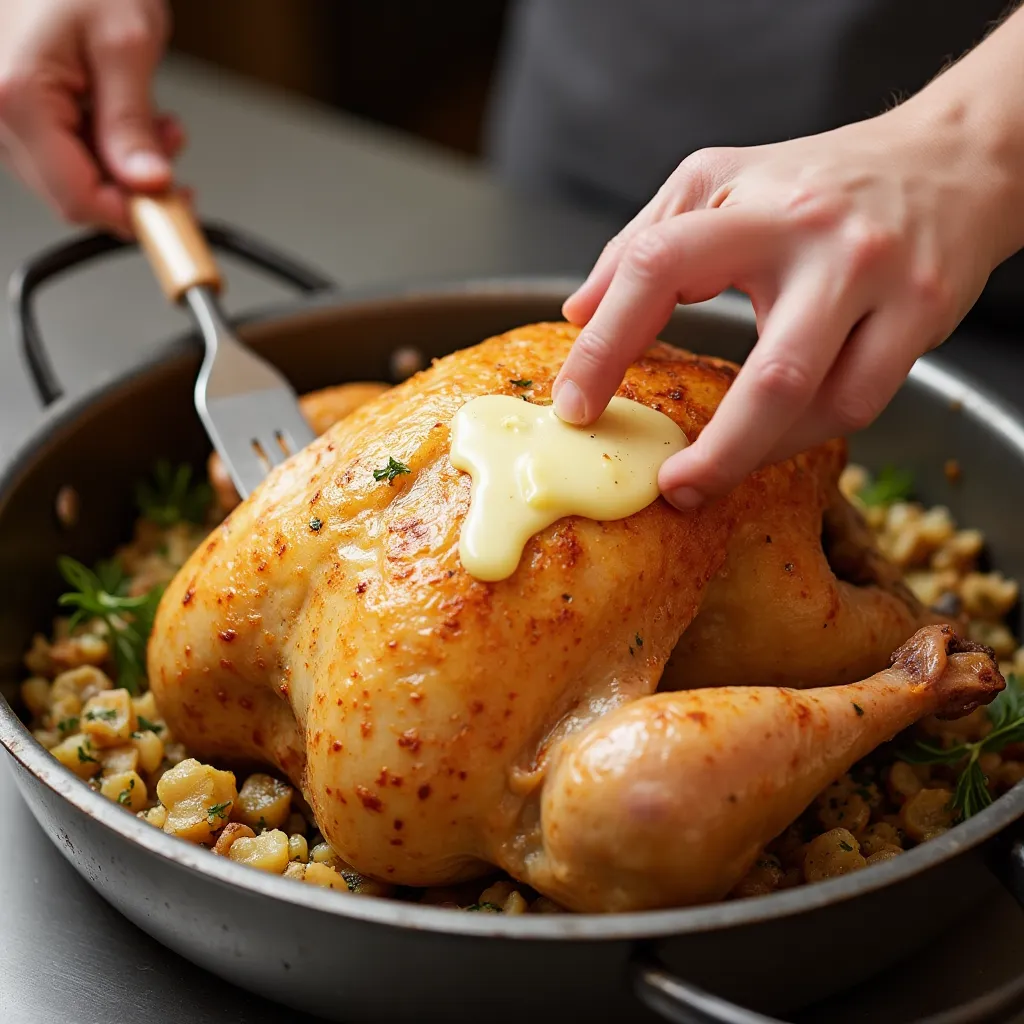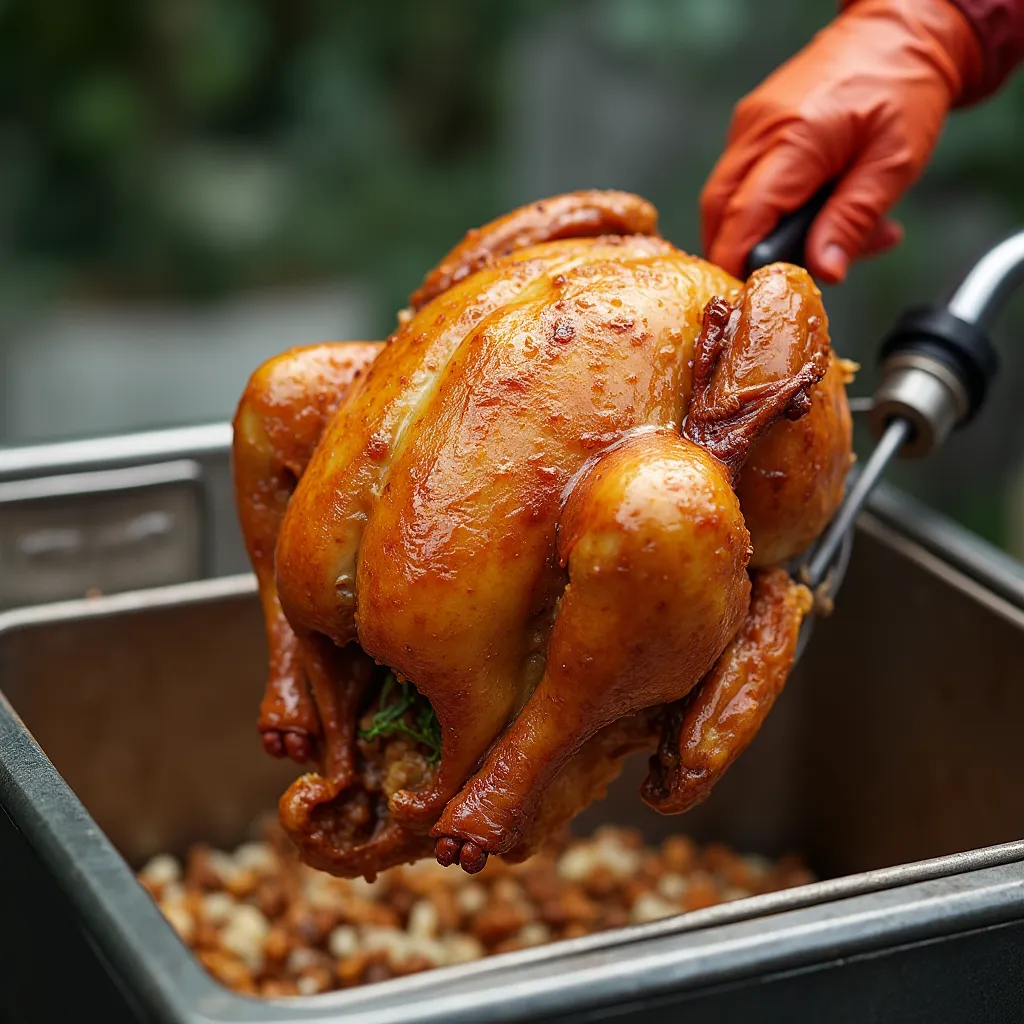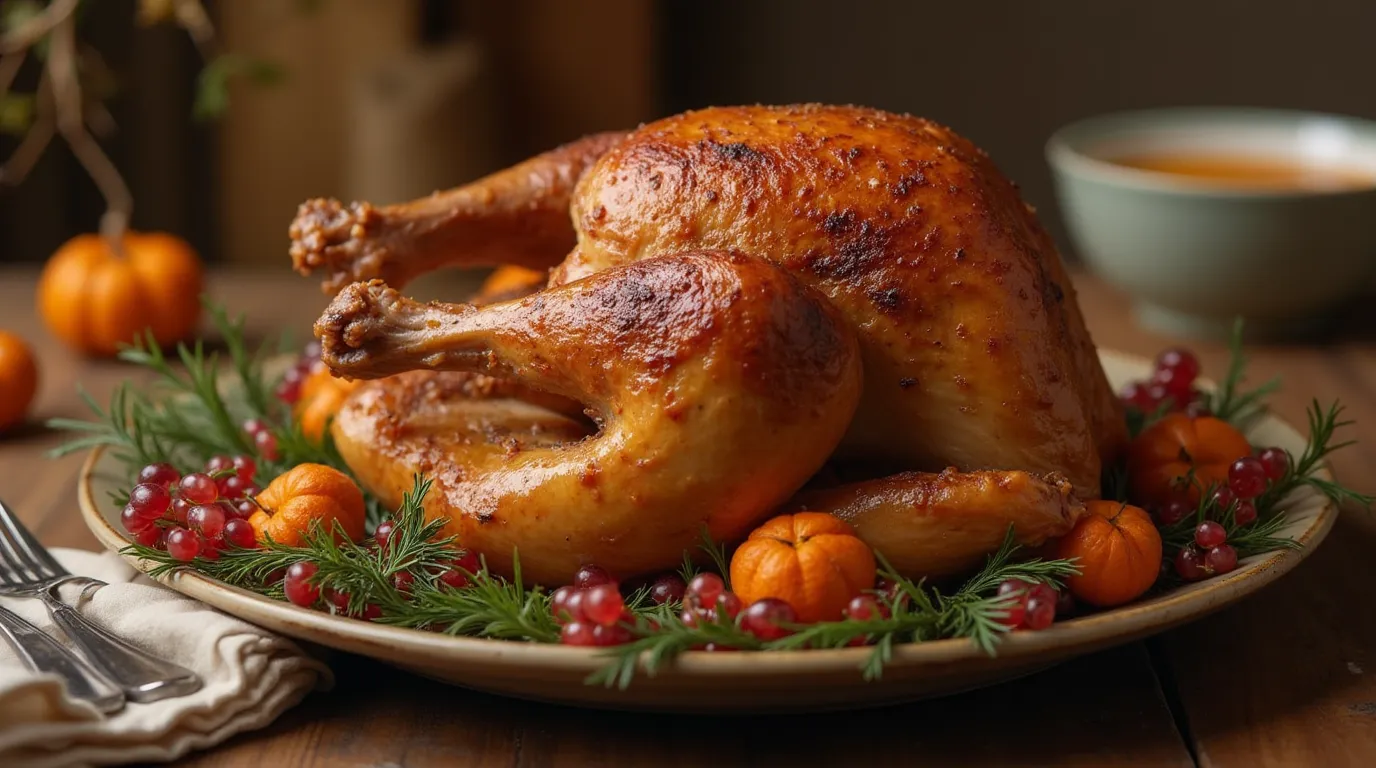What Cooking Method Is Best for Turkey?
Cooking turkey can feel like a daunting task, especially during holidays when expectations run high. From roasting to frying, smoking to grilling, there are plenty of ways to prepare this centerpiece. But which one delivers the best flavor, texture, and ease? This guide will walk you through the most popular methods, their pros and cons, and how to choose the one that suits your needs. Whether you’re a seasoned cook or a first-timer, you’ll find tips and tricks to make your turkey unforgettable.
Table of Contents
Intrduction
Why Choosing the Right Method Matters
Cooking a turkey isn’t just about following a recipe; it’s about selecting a method that suits your tastes and circumstances. The best cooking method for turkey depends on factors like flavor preference, time available, and the tools you have. A poorly chosen technique can leave you with a dry or underwhelming bird, while the right one can make it the star of your feast.
Overview of Popular Methods
There are several ways to cook turkey, each bringing unique qualities to the table. Roasting remains the classic choice, offering simplicity and traditional appeal. Frying is known for its speed and crispy skin, while smoking infuses the meat with rich, deep flavors. Grilling and braising are also gaining popularity for their ability to add unique twists to this classic dish.
Considerations for Flavor, Texture, and Time
Different cooking methods create varying textures and flavors. For instance, roasting produces crispy skin and tender meat, while frying delivers crunch with speed. Smoking, on the other hand, enhances the turkey with a complex, smoky flavor but requires patience. Grilling adds a charred, outdoor touch, while braising ensures the meat stays moist throughout. Consider your schedule, equipment, and desired taste when picking your method.
Roasting: A Traditional Favorite
Pros and Cons of Roasting
Roasting is the go-to answer for many when asked, “What cooking method is best for turkey?” It’s a classic choice for its simplicity and ability to produce evenly cooked, golden-brown skin. On the plus side, roasting doesn’t require specialized tools—just an oven and a roasting pan. It also allows you to season and baste the turkey easily, enhancing flavor throughout cooking.
However, roasting can be time-consuming, especially for large birds. It also requires careful monitoring to prevent the meat from drying out. With the right approach, though, these challenges are easily managed.
Equipment and Setup Needed
To roast a turkey, you’ll need a few basic tools:
- A roasting pan with a rack to keep the turkey elevated.
- Aluminum foil for tenting, which prevents over-browning.
- A meat thermometer to check the internal temperature.
Setting up is simple. Preheat the oven, prepare your turkey with seasonings, and place it on the rack. Add a bit of broth or water to the pan to keep the turkey moist during cooking.
Roasting Tips for Beginners
If you’re roasting for the first time, don’t worry—it’s easier than it seems! Follow these tips:
- Preheat the oven to 325°F for a slow, even roast.
- Season the turkey inside and out. Use a blend of salt, pepper, garlic, and fresh herbs for added flavor.
- Baste every 30-45 minutes to keep the skin crisp and the meat juicy.
- Avoid overcooking by monitoring the temperature. The breast should reach 165°F, and the thighs should be around 175°F.
Recipe: Simple Herb-Roasted Turkey
For those who love a straightforward approach, this recipe combines ease and flavor.
Ingredients Table:
| Ingredient | Quantity | Notes |
|---|---|---|
| Whole turkey | 1 (12-14 lbs) | Fresh or thawed |
| Olive oil or melted butter | 1/2 cup | For basting |
| Fresh rosemary | 4 sprigs | Optional garnish |
| Garlic cloves, minced | 4 | Adds depth to flavor |
| Salt | 2 tbsp | Adjust to taste |
| Black pepper | 1 tbsp | Freshly ground preferred |

Instructions:
- Preheat your oven to 325°F.
- Prepare the turkey by patting it dry and seasoning generously.
- Place the turkey in a roasting pan with a rack, and brush with melted butter or olive oil.
- Roast, basting occasionally, until the meat thermometer reads 165°F in the breast.
- Let the turkey rest for 20 minutes before carving.
Frying: Quick and Crispy
What Makes Frying Unique?
If you’re short on time or love crispy skin, frying might be your answer to “What cooking method is best for turkey?” This method creates a golden-brown exterior and moist interior in a fraction of the time required for roasting. Frying also seals in juices quickly, resulting in flavorful, tender meat.
However, frying comes with risks. It requires outdoor space and strict safety measures to avoid accidents. But for those willing to follow the rules, the results are worth it.
Safety Measures to Follow
Frying involves hot oil, so safety is key. Always:
- Fry outdoors on a flat surface, away from anything flammable.
- Use a fryer pot large enough to fully submerge the turkey.
- Ensure the turkey is completely thawed and dry to avoid oil splatters.
- Wear protective gloves and goggles when lowering the turkey into the oil.

Step-by-Step Guide to Fried Turkey
Here’s a quick rundown for frying success:
- Heat oil (peanut oil works best) to 350°F in a deep fryer.
- Pat the turkey completely dry and season as desired.
- Slowly lower the turkey into the oil, using a frying basket or hook.
- Cook for about 3-4 minutes per pound. Check the internal temperature; the breast should reach 165°F.
- Carefully remove the turkey and let it rest for 15 minutes before carving.
Benefits and Drawbacks of Frying
The biggest advantage of frying is speed. A 12-pound turkey takes less than an hour, making it ideal for last-minute preparations. The crispy skin is another bonus, offering a satisfying crunch with every bite.
On the downside, frying requires a significant amount of oil, which can be costly. Cleanup can also be a hassle, as you’ll need to dispose of the oil properly. Still, for those craving a fast and crispy turkey, frying is hard to beat.
Smoking: Depth of Flavor
Smoking is an excellent choice for those who love a rich, deep flavor. It’s often suggested when debating, “What cooking method is best for turkey?” Smoking a turkey requires a smoker, wood chips (such as applewood or hickory), and a thermometer to monitor internal temperatures. The setup may seem technical, but it’s straightforward with a bit of practice.
To get started, ensure your smoker is clean and prepped. Fill the water pan, place your wood chips, and preheat the smoker to 225°F. This low-and-slow method is perfect for infusing the turkey with smoky goodness.
Wood Choices and Their Effects on Flavor
Not all wood chips are created equal. The type of wood you use significantly impacts the flavor:
- Applewood: Sweet and mild, ideal for those new to smoking.
- Hickory: Strong and bold, suitable for those who want a more pronounced smoky taste.
- Maple or Cherry: Subtle and slightly fruity, perfect for adding a touch of sweetness.
Experimenting with wood combinations can create unique flavor profiles tailored to your preferences.
Recipe: Smoked Turkey with Applewood Chips
This simple smoked turkey recipe brings out the best in flavor and juiciness.
- Prep the Turkey: Season the turkey with a blend of salt, pepper, paprika, and brown sugar. Let it marinate for at least 12 hours.
- Smoke the Turkey: Place the bird in the smoker, breast side up. Smoke for 30-40 minutes per pound, maintaining a temperature of 225°F.
- Check Doneness: The turkey is ready when the breast reaches 165°F, and the thighs hit 175°F.
Challenges of Smoking Turkey
Smoking requires time and patience. The process can take several hours, making it less ideal for quick meals. Additionally, maintaining a consistent temperature in the smoker can be tricky. However, the final product—a tender, flavorful turkey—is well worth the effort.
For more delicious turkey recipes, check out Wild Turkey Slow Cooker Recipes.
Other Methods: Grilling and Braising
Grilling Turkey: Tips and Tricks
Grilling offers a unique way to cook turkey, perfect for outdoor gatherings. When pondering, “What cooking method is best for turkey?” grilling often stands out for its smoky, charred flavor. Use indirect heat to prevent burning and keep the meat tender. Start by oiling the grill grates and preheating the grill to medium heat.
Place the turkey on the cooler side of the grill, cover, and cook until the internal temperature reaches 165°F in the breast. Rotate occasionally for even cooking.
Braising: Perfect for Juicy Results
Braising is a lesser-known method but guarantees moist and flavorful turkey. This method involves slow-cooking the bird in a liquid, such as broth or wine, with aromatics like onions, garlic, and herbs. The result? Fall-off-the-bone tenderness.
To braise a turkey:
- Brown the turkey pieces in a heavy pot to add depth to the flavor.
- Add liquid and aromatics, then cover and cook at a low simmer for several hours.
- Check periodically to ensure the liquid level remains consistent.
Comparing Lesser-Known Techniques
Grilling and braising are fantastic alternatives to traditional methods. Grilling provides a robust, charred flavor, while braising ensures juicy and tender meat. Both methods are adaptable and bring something unique to the table.
FAQs on Cooking Turkey
Which Method Gives the Juiciest Turkey?
When deciding “What cooking method is best for turkey?”, many prioritize juiciness. Smoking and braising are excellent for retaining moisture. Smoking uses low, consistent heat, while braising cooks the bird in a flavorful liquid, ensuring every bite stays tender. Frying also locks in juices quickly, thanks to the high heat.
How Long Does It Take to Cook a Turkey by Each Method?
Cooking times vary by method and bird size:
Roasting: About 13-15 minutes per pound at 325°F.
Smoking: 30-40 minutes per pound at 225°F.
Frying: 3-4 minutes per pound at 350°F.
Grilling: 15-18 minutes per pound, depending on grill temperature.
Braising: 2-4 hours, depending on the size of the turkey and cooking temperature.
Always use a meat thermometer to check doneness. The breast should reach 165°F, and the thighs should hit 175°F.
Are Certain Methods Healthier Than Others?
Yes, some methods are healthier. Grilling and roasting are lower in fat since they don’t require oil. Smoking adds flavor without extra calories. Frying, while tasty, is higher in fat due to the oil used. If health is a priority, roasting or smoking may be better choices.
Choosing Your Best Method
Personal Preference and Practical Considerations
When answering “What cooking method is best for turkey?”, the choice depends on your preferences, time, and tools. If you enjoy bold flavors, smoking is ideal. If you want speed, frying is hard to beat. Roasting is perfect for traditionalists, while grilling offers an outdoor twist. Braising is great for guaranteed juiciness.
Experimentation for Perfect Results
Don’t hesitate to try different methods. Each technique offers unique benefits, so experimenting helps you find the best fit for your taste. Whether you prefer the simplicity of roasting or the depth of smoking, there’s no wrong way to enjoy a well-cooked turkey.
For more recipes to complement your turkey, check out The Best Turkey Neck Recipe. It’s a flavorful addition to any meal!

